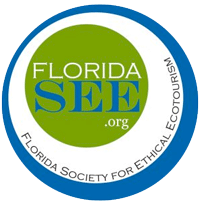Local Guide & Links
Set your watch to island time! Visiting the Florida Keys is a unique experience; it’s a bit of the beach vibe without too many beaches, a dash of island mentality with a strong independent streak, and a small town feel with sometimes rush-hour-level traffic. If it’s your first time visiting, here are some basics and background, along with local recommendations.
-
The Keys are a string of small, low-elevation islands formed by sand on the surface of coral reefs. Simply put, the difference between an island and a key is; a key is biologically created, and an island is geologically created! They extend from the southern coast of Florida, arching to the southwest and forming the southernmost portion of the continental United States. “Key” comes from the Spanish word for small island, cayo. The inhabited portion of the Keys starts in Key Largo and extends about 119 miles to the official “Southernmost Point,” mile marker 0, at the tip of Key West. With only 137 square miles, some of the islands are barely wider than the highway!
-
Because the islands were formed mainly by coral and rocks, there aren’t too many of the picturesque white sand beaches you might expect from an island, and for the most part, you’ll have to pay to play (or park). The best one by far is at Bahia Honda State Park, two-thirds of the way to Key West. In the Upper Keys, there are small beaches at John Pennekamp State Park, Harry Harris Park, and Anne’s Beach.
-
Distances and locations in the Keys are measured by the mile markers along the Overseas Highway (US Highway 1). It makes it easy to judge how far away you are from a restaurant; for example, the PADDLE! shop in Tavernier is between mile markers 90 and 91.
-
With rising narcotic trafficking and illegal immigration coming through the Keys, the U.S. Border Patrol in 1982 set up a roadblock that stopped all cars entering the islands for inspection and search. Complaining that the measure harmed the tourism industry, the Key West City Council attempted to stop the roadblock. As protest for their unanswered cries, they declared Key West’s independence, claiming that since the government had essentially established a border control point treating the island as a foreign country, it would just become one. The locals called themselves Conchs, so the “country” became the Conch Republic. The matter was resolved, but the “Conch Republic” lives on today in the independent streak of Keys residents and the profits of the tourism industry. Today, as an homage to the unique local history those who are born and raised in the keys are referred to as “Conchs” and those that live here over a long period of time and have assimilated into local culture as “Freshwater Conchs.”
-
Islamorada, from “purple island” in Spanish, is a group of islands, chiefly comprising Plantation Key, Windley Key, Upper Matecumbe Key, and Lower Matecumbe Key. It’s pronounced Eye-la-more-ah-duh.

















